/ground-report/media/post_banners/wp-content/uploads/2021/06/Homosexuality-india.jpg)
The rainbow is the one associate with the collective, but there are more flags that represent different identities, orientations and intersex conditions.
Ground Report | New Delhi: LGBTQ group continues to fight against the heteronormative system and, although nothing is decisive and each person is an authentic universe, there are Pride flags to represent and be proud of each orientation and identity, and which have more functions - very important - today: to vindicate the freedom, free love, respect and human rights.
THE FLAGS
Everything can continue to be defined from freedom. Thus, although there are multiple flags, we have collected several of the most representative and their definition.
LGBTI +
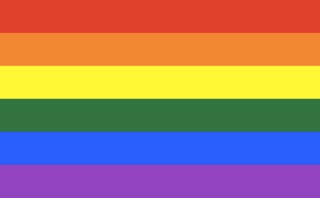
It is the one you surely know, inclusive for the entire group. It was designed in 1978 by American activist Gilbert Baker, to celebrate Pride Day in San Francisco, and was inspired by the song 'Over the rainbow'. The original flag had eight colors (it included pink ) , and each color was associated with an aspect: pink, with sexuality; red, to life; orange, to health; yellow, in sunlight; the green, to nature; turquoise, to art; the blue, to the serenity and, the violet, to the spirit.
ALSO READ: The history of LGBTQ movement in India
LESBIAN
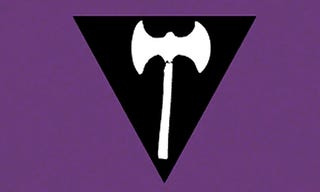
The ax was a symbol of the ancient Minoan civilization (whose religion centered on the power of a goddess and its culture was matriarchal). The black triangle is used as a symbol of solidarity , because in Hitler's Germany it was used to mark different categories of prisoners in concentration camps and, among these, non-heteronormative women, lesbian, prostitutes, the color purple of the flag represents the feminist color.
BISEXUAL
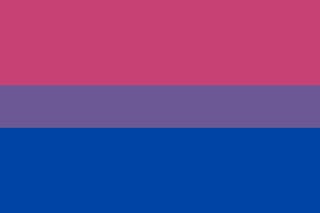
The bisexual community is one of the least understood (even within the collective, there are many prejudices towards male bisexuality! ). The flag has three colors: pink, which represents same-sex attraction; blue, the attraction for the opposite sex, and purple, which is the mixture of the two colors, thus symbolizing the attraction for both sexes. It is a design by Michael Page, and he introduced it in November 1998.
TRANS
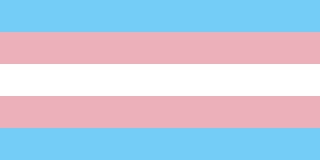
This flag was created by a trans woman: Monica Helm in 1999, and was first displayed at a pride march in Arizona in 2000. In Helms's words: "The stripes on the top and bottom are blue, the color traditionally used for boys. The stripes next to it are pink, the traditional color for girls. medium is white, for those people who were born intersex, who are in transition or consider themselves to be gender neutral or undefined. The order in which the flag is flown does not matter, it is always correct. "
INTERSEXUAL
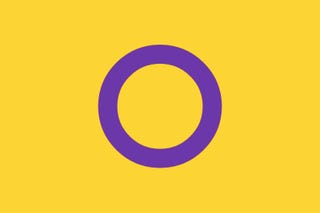
Intersex people are born with sexual characteristics that do not fit with the binary notions of masculine or feminine. Intersex is characterized by genital ambiguity, classifiable on a scale, and can begin to manifest itself at any time from birth to adulthood. Yellow and purple have long been considered a hermaphroditic color. The circle symbolizes the whole and the right to decide who and how we want to be.
ASEXUAL
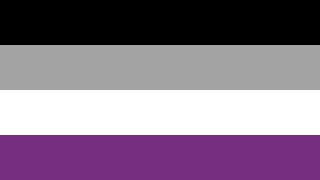
Just as the vast majority of people are sexually attracted to other people (depending on preferences), there are many others who are not attracted to anyone. Asexuality is real and legitimate, and implies little or no interest in sexual activity. It is estimated that 1% of the world's population is asexual, and until 2013 it was considered a disease. The colors of the flag represent asexuality (black), the sexual or asexual individual (gray), sexuality (white) and the collective (purple).
Within asexuality there is a very broad spectrum, and this spectrum may be familiar to demisexuality , which includes people who, in order to be sexually attracted to others, need to establish an emotional bond.
ALSO READ: When and why pride month celebrated?
PANSEXUAL
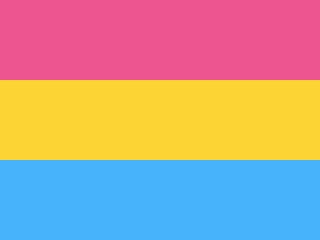
Perhaps the term sounds familiar to you because Miley Cyrus declared herself as such a few years ago (as well as other 'celebrities', such as Kesha or Sia). Pansexuality is an orientation that is characterized by romantic or sexual attraction to individuals across the spectrum, regardless of gender or sex.
NON-BINARY GENDER
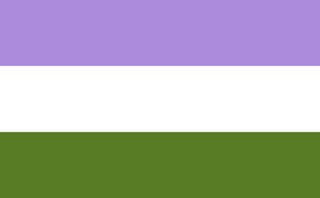
The ' genderqueer ' do not identify as people belonging to a specific gender, but rather feel a certain divergence and assign particular characteristics of certain genders to fulfill their identity wishes.
GENDER FLUID
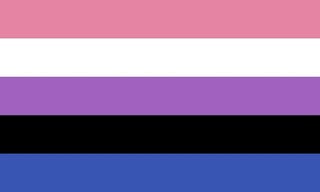
The 'gender fluid' are the people who identify with both genders and their identity flows through periods. Sometimes they feel like a woman, other times a man, other times they don't identify with any of them.
You can connect with Ground Report on Facebook, Twitter and Whatsapp, and mail us at [email protected] to send us your suggestions and writeups